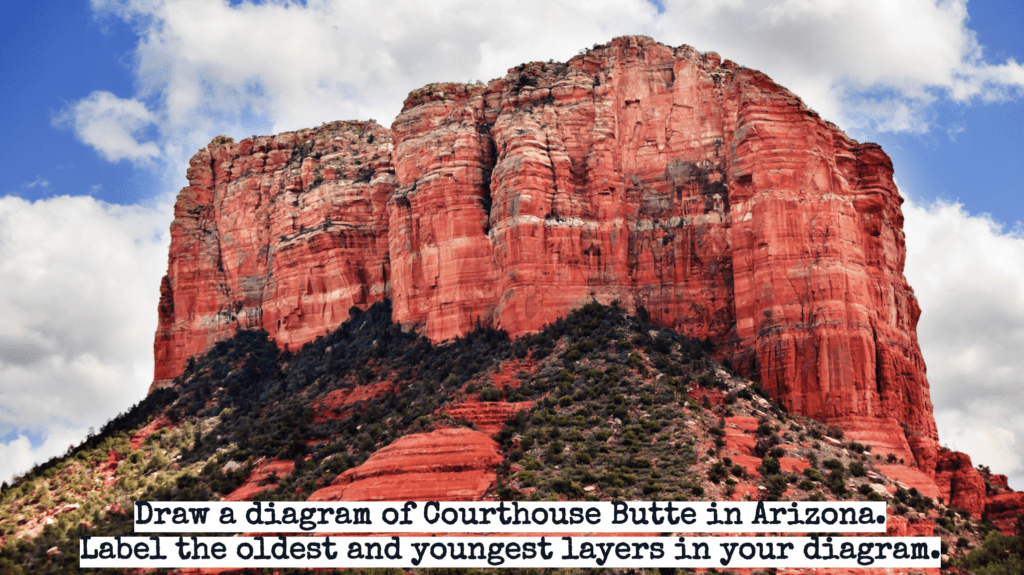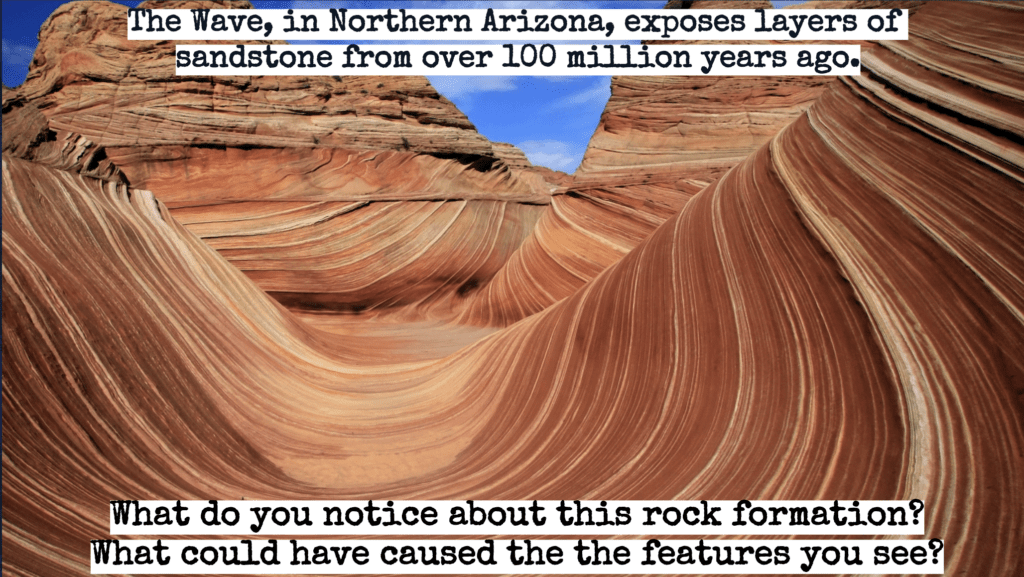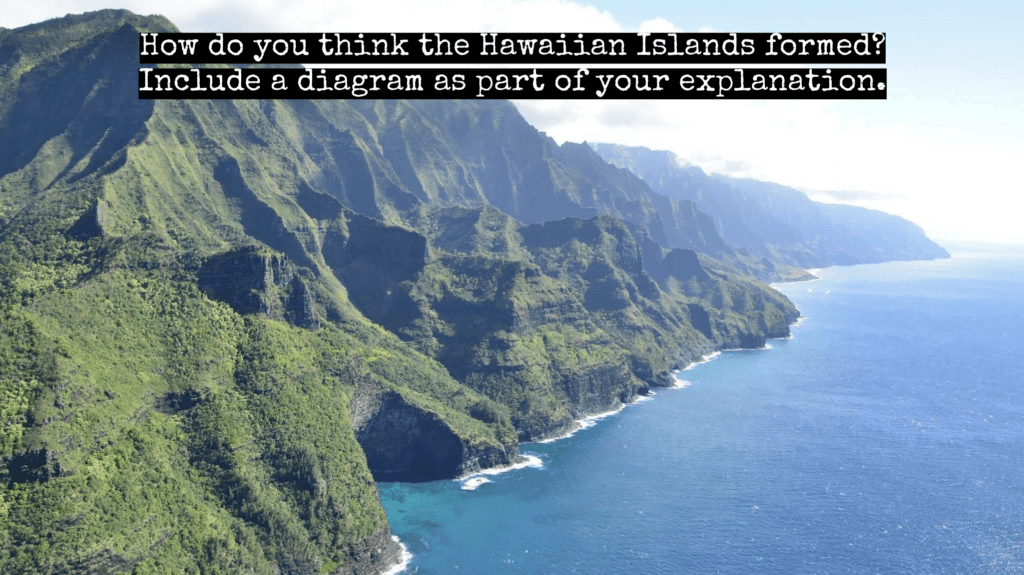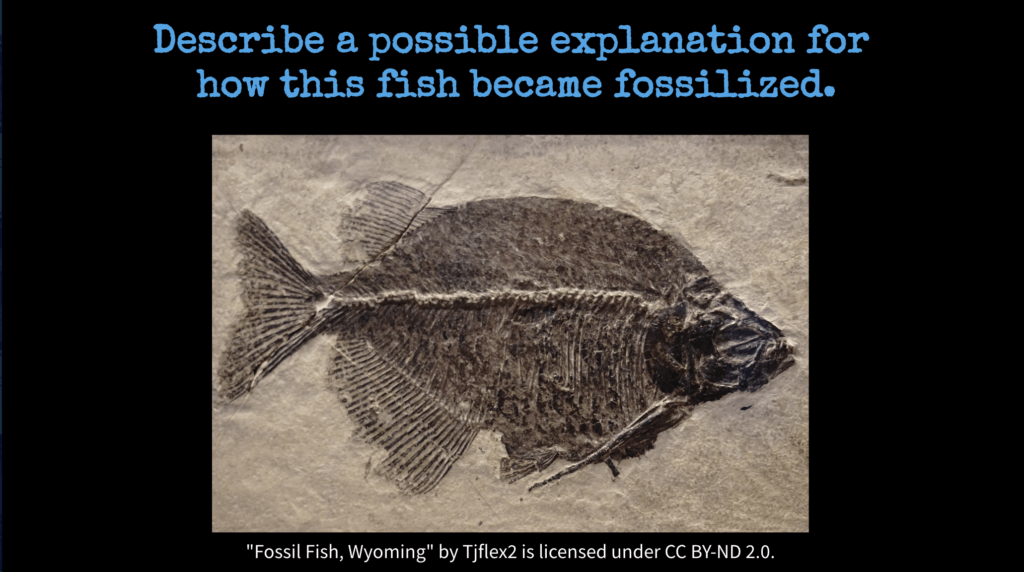For optimal viewing experience, it is recommended to access this page on a computer or large tablet.
BELLRINGERS
ESS1: Earth's Place in the Universe
MS ESS1-4
Evidence of Geological Time Scale
- Draw and label the oldest and youngest layers in Courthouse Butte.
- What may have caused The Wave rock formation in Northern Arizona?
- What might have caused this rock to have layers that are different colors?
- Describe what you observe about the rocks in this picture.
- What do you think caused the Grand Canyon to form?
- What caused these arches to form?
- What can we learn from the Ammonite fossils?
- Describe a possible explanation for how this fish became fossilized.
- Describe how volcanoes change the surface of Earth.
- Draw what the Crater Lake area looked like before the eruption.
- Explain how retreating ice sheets could result in giant lakes.

Label the oldest and youngest layers in the diagram.
Common Misconceptions
- Earth is relatively young.
- Earth has not changed much over time.

What do you notice about this rock formation? What could have caused the features that you see?
Common Misconceptions
- Earth is relatively young.
- Earth has not changed much over time.
Additional Resources
Common Misconceptions
- Earth is relatively young.
- Earth has not changed much over time.
Additional Resources
Common Misconceptions
- Earth is relatively young.
- Earth has not changed much over time.
Additional Resources

What do you think caused the canyon to form?
Common Misconceptions
- Earth is relatively young.
- Earth has not changed much over time.
Additional Resources
Common Misconceptions
- Earth is relatively young.
- Earth has not changed much over time.
Additional Resources

What can we learn from these fossils about the place and time these Ammonites lived?
Common Misconceptions
- Earth is relatively young.
- Earth has not changed much over time.
Additional Resources
Common Misconceptions
- Earth is relatively young.
- Earth has not changed much over time.
- Fossils are parts of dead animals and plants.
- Fossils of tropical plants and animals cannot be found in cold or dry areas.
Additional Resources

Include a diagram in your explanation.
Common Misconceptions
- Eruptions start at the top of a volcano.
- Earth is relatively young.
- Earth has not changed much over time.

Include a diatram as part of your explanation.
Common Misconceptions
- Earth is relatively young.
- Earth has not changed much over time.

Draw and label a picture to show what this area may have looked like 8,000 years ago.
Common Misconceptions
- Earth is relatively young.
- Earth has not changed much over time.

Explain how retreating ice sheets could result in giant lakes.
Include a diagram in your explanation.
Common Misconceptions
- Earth is relatively young.
- Earth has not changed much over time.





